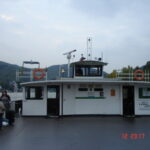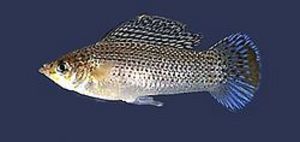CAPRI
Capri is a day-tripper’s paradise. It’s a confirmed spot on the Mediterranean celebrity circuit, which means prices are high. Explore cool cafes and designer boutiques and lots of people watching! Activities include different kinds of water sports. You can rent out canoes and motorized boats, and you can go water skiing. You can also go hiking. The main secular festival is the Gruppo Folkloristico Capresi which runs from January 1st to the 6th. You can get to Capri by ferry. The Linee Marittime Partenopee runs up to 10 hydrofoils daily to Capri and at least 6 to Naples. Caremar has three fast-ferry-sailings daily to Capri. They all depart from the port at MarinaPiccola, where you can buy tickets.
Another favorite side trip is to the Blue Grotto – you should not miss it! There are three ways to get to the Blue Grotto. By boat from this harbor, by bus up the road to Anacapri or walk up the 800 Phoenician steps. Many choose to take the boat because of the incredible views. Lacking calm seas (or a strong stomach) and nice weather, the bus would be a good choice.
The tour starts with a trip by motorboat from the Marina Grande to the entrance at the Grotto. Then, someone transfers you – in the middle of the sea – to a little boat, where you must sit on the floor, because the entrance to the grotto is too small. The cave is visited by little rowing boats, that take a maximum of two or three persons. The cave cannot be visited during bad weather conditions. Even though this is a tourist trap – it is not to be missed!
Hiking in Capri is also very popular. The loop is a path that goes along the side of the island, very, very (did I say very?) high up. The views are astonishing and it is interesting to see the places that you have seen earlier from the boat looking up. The hike is pretty strenuous and really too much for most but the scenery was truly beautiful. You can never get tired of the view of the Mediterranean.
One of the activities that is popular during a visit to Capri is a walking tour in Anicapri. Retracing an ancient Roman road, the route culminates at La Migliera, a lookout point offering spectacular cliffside views of the southwest corner of the island. The walk traverses the slopes of Mount Solero across one of the most peaceful parts of Capri.
Although Capri is hardly likely to be a bargain hunter’s paradise, shopping here is almost worth the ferry trip from Sorrento. In the main town near the Piazzetta, the shop windows are usually immaculately dressed, and the shops themselves are generally designed to be low impact and pleasing to the eye. Capri’s main shopping streets — the Via Vittorio Emanuele and Via Camerelle — are crammed with world-famous names: Fendi, Gucci, Benetton, Ferragamo, Hermès. Frustratingly though, goods are often displayed without price tags, which means you have to shop Italian-style: decide whether you like an article first and then inquire as to its price, rather than vice versa.
Bargaining is acceptable sometimes, and as everywhere, prices are best where the locals trade. Shops stay open late, till 9 or so, but close from about 3 to 5. A little shop on Capri’s luxury shopping street, Carthusia-Profumi di Capri, Via Camerelle 10 (tel. 081-8370368), specializes in perfume made on the island from local herbs and flowers. Since 1948, this shop has attracted such clients as Elizabeth Taylor (before she started touting her own perfume). The scents are unique, and many women consider Carthusia perfumes collector’s items. Note: This store is in Anacapri.Shoppers here also look for deals on sandals, cashmere, and jewelry, the town’s big bargains. The cobblers at Canfora, Via Camerelle 3 (tel. 081-8370487), make all the sandals found in their shop. If you don’t find what you need, you can order custom-made footwear. The store also sells shoes but doesn’t make those. The great sandal maker of Capri is Antonio Viva, holding forth for nearly half a century at L’Arte del Sandalo Caprese, Via Orlando 75 in Anacapri (tel. 081-8373583). In days of yore, Jackie O and Sophia Loren used to come here to purchase sandals. There are ready-made selections, but this cobbler will also design to order.
Capri is famed for its limoncello, a liqueur whose recipe was conceived several generations ago by members of the Canali family. It consists of lemon zest (not the juice or pith) mixed with alcohol, sugar, water, and herbs to produce a tart kind of “hyper-lemonade” with a mildly alcoholic lift. It’s consumed alone as either an aperitif or a digestive, or it’s mixed with vodka or sparkling wines for a lemony cocktail. In 1989, the Canalis formalized their family recipe, established modern distilleries on Capri and in nearby Sorrento, and hired professionals to promote the product as far away as the United States and Japan. Limoncello is sold at Limoncello di Capri, 79 Via Roma (tel. 081-8375561) in Capri, or at Via Capodimonte 27 (tel. 081-8372927) in Anacapri, often in lovely bottles that make nice, affordable gifts. You can get limoncello all along the Amalfi Coast as well.
SORRENTO
Sorrento is still a civilized old town. It has a lot of fine old shops that sell ceramics, lacework and inlaid-wood items. The town straddles the cliffs that look over the water to Naples and Mt Vesuvius. Sorrento is another one of the best Amalfi Coast Side Trips! The centre of Sorrento shopping is undoubtedly Via S. Cesareo, the beating heart of the town. Many-colored shops and wares follow one another along an ancient Greek-Roman route where tourists from every part of the world crowd, enlivening and animating the milieu. It is possible to buy handicrafts such as inlaid works, ( I still have a fabulous inlaid music box from Sorrento)artistic ceramics and scented wax, or delicacies like “Limoncello” sweets, “Rosolio” liqueur, jams and preserved vegetables, or silver jewels, corals and cameos, valuable embroideries on table-cloths and handkerchiefs, Neapolitan eighteenth century crib’s figurines or composition of withered flowers. And then, fashion for all tastes and pockets, from the great “griffes” to the cheap ready to wear dresses for young people. Moreover, on Tuesday, in Sorrento, you can go shopping in the weekly street market, where it is possible to buy all at reasonable price!
The main local product is no doubt the Limoncello di Sorrento. It’s a liquor made from lemons that are grown on the rich soil of the Sorrentine peninsula. The combination of the extremely mild micro-climate, the sea, the sun and the volcanic soil result in the best lemons of the world. It’s from these lemons, that are biologically cultivated, that the famous limoncello is made. Limoncello is a very natural liquor that consists of sugar, lemons, alcohol and water. TIP: Limoncello should be served very cold, preferably in a pre-cooled glass. It is very strong so be sure to sip it.
Be wary of pick pockets! Especially during tourist season when it is crowded. Hold onto your backpacks and pocketbooks like you would do in any large city!
Sorrento is located on the top of a cliff above the sea. The swimming area is at the bottom of the cliff. You can take an elevator from the center of Sorrento down to the swimming area. There is no real beach, but instead boardwalk type structures out into the water where people lie in the sun. There are stairs down into the water, but we did not see many people swimming. The gardens there offer views of the bay and steps lead down to the shore. The views are breathtaking from Villa Comunal Park. The day tours offer tours of the Amalfi Coast and boy of Naples including Capri. The most important festival is the Sorrento Film Festival, is usually held in November.
If you’d like to go hiking, you can explore the green hills above Sorrento. Many of the trails are marked, and the tourist office will advise.
You can get there by bus. Sita buses serve the Amalfi Coast and Sant’Agata, leaving from outside the Circumvesuviana train station. At least 12 buses a day run between Sorrento and Amafli looping around Positano and more than 10 buses also run to Ravello.
By train, Circumvesuviana trains run every half-hour between sorrento and Naples via Pompeii.
POMPEII
Pompeii is the world’s most famous volcano disaster. Pompeii is Italy’s top tourist attraction. The entire town was enveloped in ash in a matter of minutes. People had no chance at escape and once excavated they were found in the exact poses of the eruption! Numerous myths have surrounded Pompeii, one of which is that a completely intact city was rediscovered. Actually, the Pompeians (that is, those who escaped) returned to their city when the ashes had cooled and removed some of the most precious treasures from the resort. But they left plenty behind to be uncovered at a later date and carted off to museums throughout Europe and America.
After a long medieval sleep, Pompeii was again brought to life in the late 16th century, quite by accident, by architect Domenico Fontana. However, it was in the mid-18th century that large-scale excavations were launched. Somebody once remarked that Pompeii’s second tragedy was its rediscovery, that it really should have been left to slumber for another century or two, when it might have been better excavated and maintained.
The Porta marina is the entrance to the ruins. The Tempio di Venere(Temple of Venus) is one of the town’s most lavish temples. Along the Via marina on the left, you pass the Tempio di Apollo(Temple of Apollo) which is the oldest of Pompeii’s religious buildings.Pompeii is amazing. The inhabitants of Pompeii were caught completely off guard! This is one of the best historical Amalfi Coast Side trips!
There’s not a lot to see in “modern day” Pompei except for this. Lying about a 5 minute walk away from the amphitheatre entrance to the ruins, this basilica may look old but was, in fact, built in 1934 at the request of Pope Pius XI. Bartolo Longo, founder of the Shrine of Our Lady Queen of the Rosary, was born in 1841, the son of a doctor. Longo studied to be a lawyer. During his studies, he joined a sect and was ordained as a priest of Satan. He publicly ridiculed Christianity and did all in his power to subvert Catholic influence. It was Longo who gathered the inhabitants of the former little church that once stood here to give money in order to build a bigger church. He died in 1926 and was proclaimed “Blessed” by Pope John Paul II in October 1980. Open: 6.30am-2pm. 3pm-6.30pm daily.
Don’t miss the brothel frescoes. Many take pictures to send photo’s to a Friend. Of course what most people come to see inside the brothel are those paintings – lets just say they are “educational” ;-). There is a different one above each of the 10 cells – so you can choose which you would like! I would advise not taking the children inside unless of course you want a million questions!
If you are looking for a bus there’s the Sita that operates regular bus services between Naples and Pompeii. The Cstp runs buses from Salerno. The Marozzi offers services between Pompeii and Rome; prices vary so call or check with it. Sita buses depart from in front of the post office ouside Porta Marina, while CTSP and Marozzi buses leave from in front of Hotel Vittoria.
By car or motorcycle take A3 from Naples, a trip of about 23km, outerwise you could spend hours weaving through narrow streets and traffic snarls. Use the Pompeii exit and follow signs to Pompeii Scavi. Car parks are clearly marked.
By train, from Naples take the circumvesuviana train for Sorrento and et off at Pompeii-scavi-Villa dei Misteri station.




